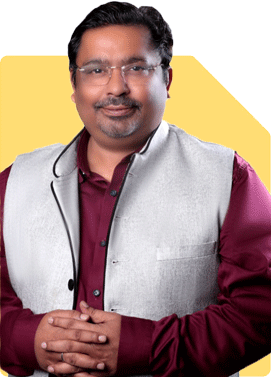Hello sir, I want to save a corpus of 1crore in next 10 years. Currently I am investing 6k in UTI nifty 50 index fund and 5k in parag Parikh flexicap growth fund.
Can you tell me by how much I need to increase SIP and do I need to change these plans
Ans: Evaluating Your Current Investment Strategy
First, congratulations on setting a clear financial goal and already taking steps towards it by investing regularly. Your dedication to saving and investing will pay off in the long run. Currently, you are investing Rs. 6,000 in the UTI Nifty 50 Index Fund and Rs. 5,000 in the Parag Parikh Flexicap Growth Fund. Let's examine these investments and assess how you can achieve your goal of Rs. 1 crore in the next 10 years.
Understanding Index Funds
Index funds, like the UTI Nifty 50 Index Fund, are designed to replicate the performance of a specific index, in this case, the Nifty 50. While they offer low-cost exposure to a broad market, they also come with limitations. Index funds are passive investments and do not attempt to outperform the market. They strictly follow the index, which means they can underperform during market downturns or periods of high volatility.
Benefits of Actively Managed Funds
Actively managed funds, such as the Parag Parikh Flexicap Growth Fund, aim to outperform the market through strategic stock selection and portfolio management. These funds offer the potential for higher returns as fund managers actively seek out opportunities and manage risks. Given the market's potential fluctuations over the next decade, actively managed funds might provide better risk-adjusted returns compared to passive index funds.
Evaluating Your Current SIPs
Currently, your total monthly SIP investment is Rs. 11,000. To achieve a corpus of Rs. 1 crore in 10 years, it's essential to evaluate whether this amount is sufficient or if it needs to be increased. Considering an average annual return, it's likely that you may need to increase your SIP contributions to meet your goal.
Calculating the Required SIP
Let's consider the need to increase your monthly SIP to achieve your goal of Rs. 1 crore in the next 10 years. Without diving into specific calculations, generally speaking, increasing your SIP amount will help you reach your target more comfortably.
Increasing SIP Contributions
Based on general growth projections, you may need to increase your monthly SIP to around Rs. 15,000 to Rs. 20,000. This estimate assumes an average annual return that actively managed funds can potentially deliver.
Phased Increase Approach
If an immediate increase to Rs. 20,000 per month is challenging, consider a phased approach. Gradually increase your SIP amount every year. For example, start with Rs. 15,000 and increase it by a certain percentage annually. This method helps manage the impact on your monthly budget while progressively moving towards your goal.
Diversifying Your Investment Portfolio
Exploring Other Actively Managed Funds
While the Parag Parikh Flexicap Growth Fund is a solid choice, consider diversifying into other actively managed funds. Diversification helps spread risk and enhances potential returns. Look for funds with strong track records, experienced fund managers, and consistent performance.
Sector-Specific and Thematic Funds
Sector-specific or thematic funds can provide higher returns by focusing on growing industries. For example, technology, healthcare, or renewable energy funds have shown strong growth potential. However, these funds come with higher risks due to their concentrated exposure, so they should only form a small part of your portfolio.
International Equity Funds
International equity funds invest in global markets, providing exposure to international companies and economies. These funds offer diversification benefits and reduce country-specific risks. Including a small portion of international funds can balance your portfolio and enhance returns.
Reviewing and Rebalancing Your Portfolio
Regular Portfolio Review
Review your portfolio at least once a year to ensure it aligns with your financial goals and market conditions. Regular reviews help identify underperforming investments and rebalance your portfolio as needed.
Rebalancing Strategy
Rebalancing involves adjusting the allocation of your investments to maintain your desired asset mix. For example, if one fund significantly outperforms, it may become a larger portion of your portfolio than intended. Rebalancing ensures you maintain your risk tolerance and investment strategy.
Monitoring Fund Performance
Keep track of the performance of your funds. Compare their returns against benchmark indices and peer funds. Consistently underperforming funds should be reviewed and possibly replaced with better-performing alternatives.
Tax-Efficient Investment Strategies
Utilising Tax Benefits
Maximise contributions to tax-saving instruments like Equity Linked Savings Scheme (ELSS) for Section 80C benefits. Tax-efficient investing enhances your overall returns and reduces your tax liability.
Long-Term Capital Gains
Investing with a long-term perspective (more than one year) can benefit from lower capital gains tax rates. Holding investments for the long term also helps ride out market volatility and compound returns effectively.
Building a Comprehensive Financial Plan
Setting Clear Financial Goals
In addition to your Rs. 1 crore corpus goal, set other financial goals like retirement planning, children's education, or buying a home. Having clear goals helps in creating a structured financial plan.
Budgeting and Saving
Create a detailed budget to track your income and expenses. Identify areas where you can cut unnecessary costs and redirect those savings towards your investments. Budgeting ensures disciplined saving and investing.
Emergency Fund
Maintain an emergency fund equivalent to 6-12 months of living expenses. An emergency fund provides a financial cushion during unexpected situations, preventing you from liquidating long-term investments prematurely.
Engaging Professional Guidance
Certified Financial Planner Expertise
Engaging a Certified Financial Planner (CFP) can provide valuable insights and personalised advice. A CFP can help you create a comprehensive financial plan, considering your goals, risk tolerance, and time horizon. They can also assist in selecting suitable investment options, monitoring performance, and making necessary adjustments.
Risk Management
A CFP can help identify and manage risks associated with your investments. They can recommend appropriate insurance coverage, asset protection strategies, and contingency plans to safeguard your financial future.
Retirement Planning
In addition to your Rs. 1 crore goal, consider long-term retirement planning. A CFP can help you estimate the corpus needed for retirement and create a plan to achieve it. Investing in a mix of equity, debt, and other instruments can provide a balanced retirement portfolio.
Leveraging Digital Tools and Resources
Investment Tracking Tools
Use digital tools and apps to track your investments, monitor performance, and manage your portfolio. These tools provide real-time updates and insights, helping you stay on top of your financial goals.
Educational Resources
Educate yourself about investing and financial planning through online courses, webinars, and articles. Understanding the basics of investing empowers you to make informed decisions and manage your portfolio effectively.
Automated Investing
Consider using automated investment services that offer robo-advisory. These platforms provide algorithm-based investment advice, portfolio management, and rebalancing, making investing simpler and more accessible.
Final Insights
Achieving a corpus of Rs. 1 crore in 10 years is a realistic goal with disciplined investing and strategic planning. Increasing your SIP contributions and diversifying your portfolio into actively managed funds can help you reach your target. Regularly review and rebalance your investments to ensure they align with your financial goals. Utilise tax-efficient strategies and maintain a comprehensive financial plan that includes budgeting, emergency funds, and long-term retirement planning.
Engaging a Certified Financial Planner can provide personalised advice and ongoing support. Leverage digital tools and educational resources to enhance your understanding of investing and stay informed about market trends. Your commitment to saving and investing is commendable, and with a structured approach, you can achieve your financial goals and secure a stable financial future.
Best Regards,
K. Ramalingam, MBA, CFP,
Chief Financial Planner,
www.holisticinvestment.in




























